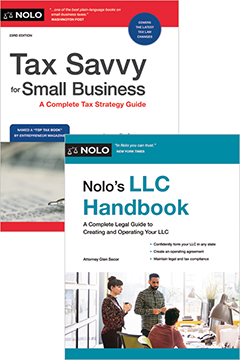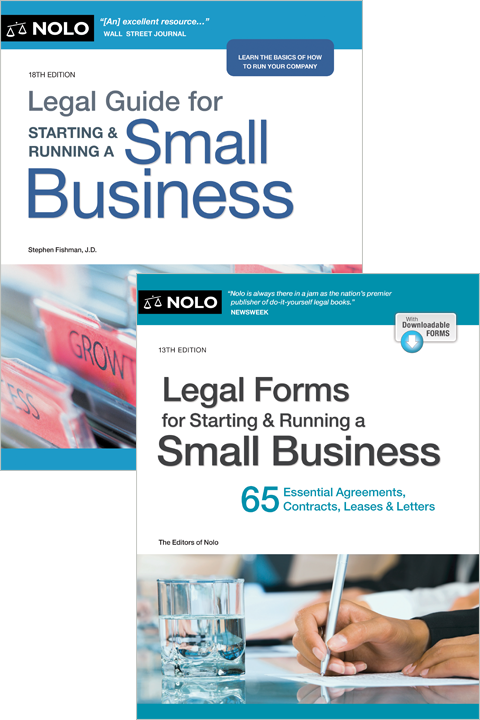You have your dream deal. You just have to negotiate it first. Explore the 2 stages of negotiation, the different bargaining positions, and 11 common negotiation tactics for negotiating business agreements.
Contract negotiation is the process of give and take that the parties go through to reach an agreement. Or, as they often say in business: "You don't get what you deserve; you get what you negotiate."
Usually, before you reach a business agreement, you'll need to negotiate. That is, sit down at the proverbial table—with the other people or companies that are "parties" to the agreement—and hammer out the details of the contract. If you're new to the game or need a refresher, it's a good idea to review how contract negotiations work and some of the tried-and-true negotiation strategies.
How Contract Negotiations Work
In a typical contract negotiation, each party compromises on some issues in order to get what it really wants. Although there are always lots of details to work out, most contract negotiations boil down to two essential factors: risks and revenues.
For example, suppose a landlord, Vincent Allen, is in a commercial lease negotiation with a new business, Qualstarr, Inc. Vincent wants to obtain a profitable rental income (revenue) while also guaranteeing the right to swiftly remove Qualstarr if the company falls behind on rent payments (risk). Vincent is aware that a new business is at a higher risk of not making its rent payments because the business doesn't have an established customer base or revenue history to show that it'll be a reliable tenant. So, Vincent offers Qualstarr a higher rent price to offset the risk of renting to a new business.
Stages of Contract Negotiation
Often, contract negotiations have two distinct stages:
- negotiation of the basic business terms, and
- negotiation of the legal terms.
First, you'll negotiate the business terms, including what's going to be exchanged, and when and how it'll be exchanged. For instance, using our previous commercial lease example, Vincent and Qualstarr will negotiate the rent amount, the lease term, the security deposit, and the lease start date.
Second, you'll negotiate the legal terms. Many of these legal terms make up the contract's boilerplate provisions. These legal negotiations include topics such as:
- when and how the contract can be terminated
- how disputes will be resolved (such as mediation or arbitration provisions)
- how to amend the contract
- whether business insurance is required, and
- whether the contract can be assigned or obligations under the contract delegated.
Returning to our commercial lease example, suppose Vincent and Qualstarr have agreed on the length of the lease and Qualstarr's financial obligations. Now, Vincent and Qualstarr need to work out the finer legal details. Vincent pushes for Qualstarr to get business insurance and Qualstarr negotiates for a sublease provision. Both agree that an arbitration provision will be in their best interests and that contract amendments have to be in writing.
The Parties' Bargaining Positions
Each party has something they want and something to give (called "consideration") in a business agreement. Who each party is and how they approach the bargaining table will determine what each party walks away with.
Bargaining styles. The two most common bargaining styles are adversarial ("I'm in charge") and collaborative ("Together we will prosper"). The various negotiating styles are of course employed by real people, who bring their temperaments, emotions, and personalities to the table along with their list of terms. Keep reading for tips on the best negotiation style.
Bargaining power. One key to the outcome of contract negotiation is the relative bargaining power of the parties. A party with vastly superior bargaining power—for example, a supplier with control of an in-demand, low-supply product— doesn't have to negotiate. Instead, these heavy hitters often present a contract and tell the weaker party to "take it or leave it." But the less-advantaged party isn't without any power, and they can potentially argue that a provision is unfair or unconscionable, and therefore unenforceable.
Contract Negotiation: 11 Strategies
There have been plenty of books written about negotiating tactics. Many tips are silly. For example, suggesting that you provide caffeinated drinks (without partaking yourself) and then waiting for your negotiation partners to give away the store in a drug-induced daze. Other negotiation tactics are devious and have the potential to backfire—for example, pretending to have another suitor in the wings or insisting on negotiating items you don't really care about, so you can pretend to give in on those and get all of the things you really want.
Below we've summarized 11 of the more common and popular contract negotiation tactics. Some of these might seem like commonsense (even obvious) strategies, but they're proven to work.
1. Break the negotiation into parts. Some negotiations disintegrate because the parties take an "all or nothing" approach, meaning that the other party must agree to all of their terms in order to move forward. A good way past this type of roadblock is to break the negotiations into sections and reach an agreement on each part separately. This compartmentalization makes it feel as if you're reaching a series of solutions—and making progress—rather than battling one big war.
2. The "I'm only asking for what's fair" approach. This approach emphasizes that one party's requests are simply in line with industry standards or current market prices. This strategy relieves you of the obligation to justify your terms or spend time negotiating for them. If you emphasize that you're asking only for standard deal terms, the burden shifts to the other party to convince you that you should make an exception in this case (and to make that exception worth your while by offering concessions elsewhere).
3. The Getting to Yes approach. The authors of this book (Getting to Yes, by William Ury and Roger Fisher) emphasize that to reach an agreement (to get to "yes") the negotiating parties must separate the people from the issues—that is, remove the emotion from the equation. To apply this strategy, you need to look beyond the negotiating parties to see who or what the real interest or influence affecting each party is. Then you can generate options to create a problem-solving environment and neutralize conflict by sticking to objective and easy-to-justify principles of fairness.
4. Take control. Controlling the location, timing, topics, and pace of negotiation (sometimes called "controlling the agenda") can create an advantage. For example, lawyers often believe that the attorney who drafts the agreement is in the contractual driver's seat. Similarly, by controlling the negotiations, you get to decide which topics are discussed and in what order. Sometimes, parties use a passive approach to take control. For example, one party might seem to act as the moderator for the negotiations or offer to "summarize" where things stand (in a letter or brief statement at the start of a negotiating session). No matter how the reins are seized, the party that frames the issues generally has more control over how those issues are eventually resolved.
5. Prioritize, prioritize, prioritize. Contract negotiations typically focus on revenue and risks. But clearly, some revenues and risks are more important than others. When you negotiate, you need to know what your top priorities are—usually the business or money-making opportunity offered by the deal—and how your other priorities rank below that. This exercise will help you keep your eyes on the prize and avoid getting bogged down in issues that aren't as important to you.
6. The "offer-concession" strategy. Make sure the other side leaves the negotiation feeling like they've made a good deal. The offers you make should always leave you enough wiggle room to make acceptable concessions to the other side. So, you shouldn't start negotiations by revealing your absolute bottom line. If you instead leave yourself room to negotiate, you'll make the other party feel that they've won something. You might be surprised to find that the other party is willing to give more than you would've been willing to accept.
7. Question rather than demand. If the other party is taking a hard line on certain issues, ask why. Questions open up the discussion; arguments often close communication down.
8. Find points of agreement and end on a positive note. This upbeat approach requires that you find opportunities to say, "You're right about that," or "I agree." However small these points of agreement might be, they help set a collaborative tone. At the same time, if negotiations are spread over a series of meetings, always attempt to end each one positively. This positivity goes a long way to establishing a collaborative tone that's more likely to be conducive to progress and result in an agreement.
9. Do your research. The party with more information usually has more leverage. For example, if you know that a company is going out of business and eager to liquidate its assets, that knowledge gives you more leverage—and some extra bargaining chips. You might be able to insist on a lower price, particularly if you're willing to buy most of their remaining assets. Sometimes, even personal information about the parties can help you create a more collaborative atmosphere ("Hey, I'm racing in that triathlon, too.")
10. Dealing with burnouts and ultimatums. If the other party resorts to threats ("Agree to these terms or there's no deal") or wages a war of attrition by dragging out the negotiations, you'll have to decide what the underlying deal is really worth to you. If the ultimate prize is so valuable that you're willing to accept the other party's ultimatum or put up with endless haggling, that's fine. Similarly, if the other party has all the power (for example, they're the only known buyer for your product), then you might have to grin and bear it for a while. If not, however, the best strategy is often to walk away from the negotiations. If the other party really needs you, they might reevaluate their tactics and return to the table. If not, you can move on to more productive negotiations with someone else.
11. Use facts, not feelings. Successful negotiators separate business from personal, facts from feelings. They avoid letting an unpleasant personality or style drag down the negotiations. They also avoid making the negotiations seem personal by using language such as "I believe" or "I think," focusing instead on statements of fact ("If we pay this price, both parties to the venture will be at risk.")
Employing these strategies can help you secure a final contract that you're excited about. Remember, under contract law, there's no valid contract until all of the material elements of the deal have been negotiated and agreed upon.
Consulting a Business Lawyer
If you and the other side are in general agreement about the contract's terms and you have knowledge of basic contract provisions, you can probably negotiate the agreement yourself. Your industry knowledge and business insight will be valuable assets at the negotiation table.
But if you're stuck on a particular issue or want legal help hammering out contract details, you should consult a business lawyer. They can step in to negotiate the terms to minimize risks and maximize revenue. They can also draft your contract for you and start you off in a better bargaining position.
If you're interested in further education on contracts, see Contracts: The Essential Business Desk Reference, by Richard Stim (Nolo).



